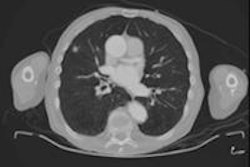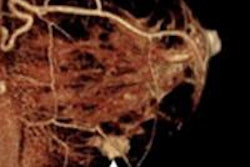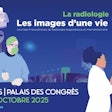
Dr. Christian Stroszczynski, professor and head of radiology at University Hospital Regensburg, was elected as the new chairman of the German Society for Interventional Radiology and Minimally Invasive Therapy (DeGIR) at the 97th German radiology congress, held in Leipzig in May. In this interview, he explains about the society's role in interventional radiology and his objectives during his term in office.
What's different and special about interventional radiology?
 Dr. Christian Stroszczynski, chairman of DeGIR.
Dr. Christian Stroszczynski, chairman of DeGIR.Interventional radiology, or image-guided therapy, uses imaging to guide medical instruments around the body, so it's very technology-based, but it can be used to treat lots of diseases directly. Interventional radiology does everything, from head to toe. We treat all kinds of disorders and focus more on the different modalities, so interventional radiologists are team players, because patients don't come straight to us; we rely on other professionals to refer patients to us, so it's important to be an integral part of a therapy team to which we contribute our therapeutic skills.
We can carry out a very wide variety of therapies -- anything from vascular treatment of peripheral arterial occlusive disease to liver cancer or uterine myomas. That's what makes the job so exciting. But it also means that interventional radiology needs its own voice, so we don't get lost amid all the treatment options that are available. We have to keep on highlighting the advantages of interventional radiology compared with other specialties.
Interventional radiologists are like strikers in a football match: Both depend on other players passing the ball to them. But if you're standing there on your own up front and no one kicks the ball your way, there's nothing you can do.
Interventional radiology is still a relatively new specialty, isn't it?
Yes and no. Radiologists have always carried out image-guided interventions. They started a long time ago, using a needle to treat problems they'd seen in images, in a minimally invasive way.
Interventional radiology officially began with an innovation by Dr. Charles Dotter, who started dilating blood vessels interventionally in 1964. For a long time, it was almost synonymous with angiography, partly because of the need to treat peripheral arterial occlusive disease as a public health issue. Over the past 20 years, we've seen a series of new interventions that have little to do with vascular disease. For example, interventional radiology is playing a major role in the treatment of liver cancer, and we now have more patients than surgeons or internists in this area.
So we're a very young and fast-growing field, and it's barely 50 years from those first heroic experiments to today's detailed therapy guidelines. A lot of the pioneers are still alive and, in some cases, working.
Why does there need to be a Society for Interventional Radiology and Minimally Invasive Therapy?
DeGIR was founded in 2008 because interventional radiology needed its own voice. As things were, the German Radiological Society (DRG, Deutsche Röntgengesellschaft) wasn't able to give the profession the support it needed to compete with other professions. Many other medical professions still do their own radiology, even interventional radiology. We have to work against this. Interventional radiologists have always had the big advantage of being versatile and extremely well-trained, and it's always been important to have our own association so that others see us not just as diagnosticians, but as treatment specialists in our own right. This is hugely important when it comes to pay, structural issues, and treatment guidelines.
What are DeGIR's objectives?
One key aim is to ensure the best possible quality of treatment. Interventional radiologists have the best training in interventional and minimally invasive techniques. We need to provide visible evidence of this excellence, and the key to this is certification. DeGIR has been the leading force in this area, and our certification system has been a model for many other societies. Our latest project is DeGIR's centers for interventional vascular medicine and minimally invasive therapy. This is a seal of quality, telling people that you're a team of experts offering interventional radiology from top to toe.
What specific plans do you have for your term in office from 2016 to 2018?
I'd like us to be more visible to both patients and colleagues. We can do this by stepping up our public relations, but also by creating new types of structure within clinics and practices. I've seen some excellent examples of specialist outpatient clinics where patients are treated jointly by interventional radiologists, internists, and surgeons. So patients can go straight to interventional radiologists for consultations, and then be treated onsite. Some places even have their own interventional radiology beds. We need to expand these, because it's the only way of ensuring that interventional radiologists are seen as treatment specialists in their own right, physicians with their own patients. That's my goal.
How did you come to radiology?
I started in internal medicine, because even today medical students don't encounter radiology until a very late stage. As a junior doctor, I became very interested in the clinical side of medicine through the areas of hematology and oncology. And radiology was, and still is, becoming increasingly clinical.
In Regensburg, where I work, all new radiologists spend six months in surgery to become familiar with the clinical aspects. How to write a doctor's letter, how to talk to patients, how to explain points to them, what is a laboratory value -- all that has become very important in radiology.
And why are you now working specifically in interventional radiology?
Because I've always been very interested in the diagnostic and therapeutic sides, as well as the clinical aspects. I wanted to find out what condition the patient had, so I could then find the right treatment for them. Interventional radiology was ideal for me, because it combined the detective work of diagnosis with providing the right therapy.
But it was a very long time before I was able to work interventionally. Sadly, that's still often the case. I'm always hearing complaints that not enough young people are interested in interventional radiology, but that's often because it's not easy to get good training as part of a compulsory rotation. Directors and heads of department can ensure that anyone who's interested in interventional radiology comes into contact with it at an early stage. That's something else I'd like DeGIR to do.
Editor's note: This is an edited version of a translation of an article published in German online by the DRG. Translation by Syntacta Translation & Interpreting. To read the original article, click here.



















